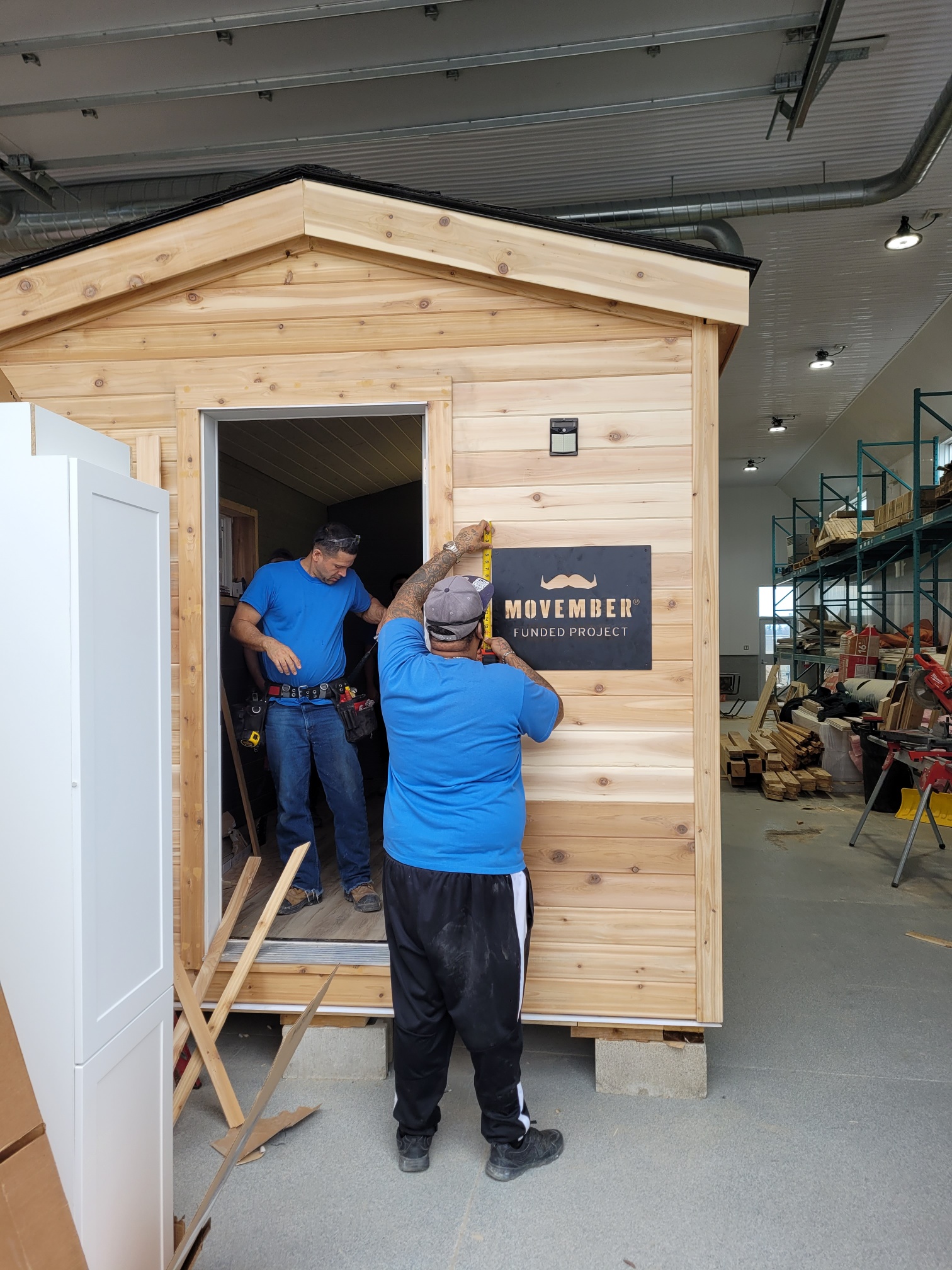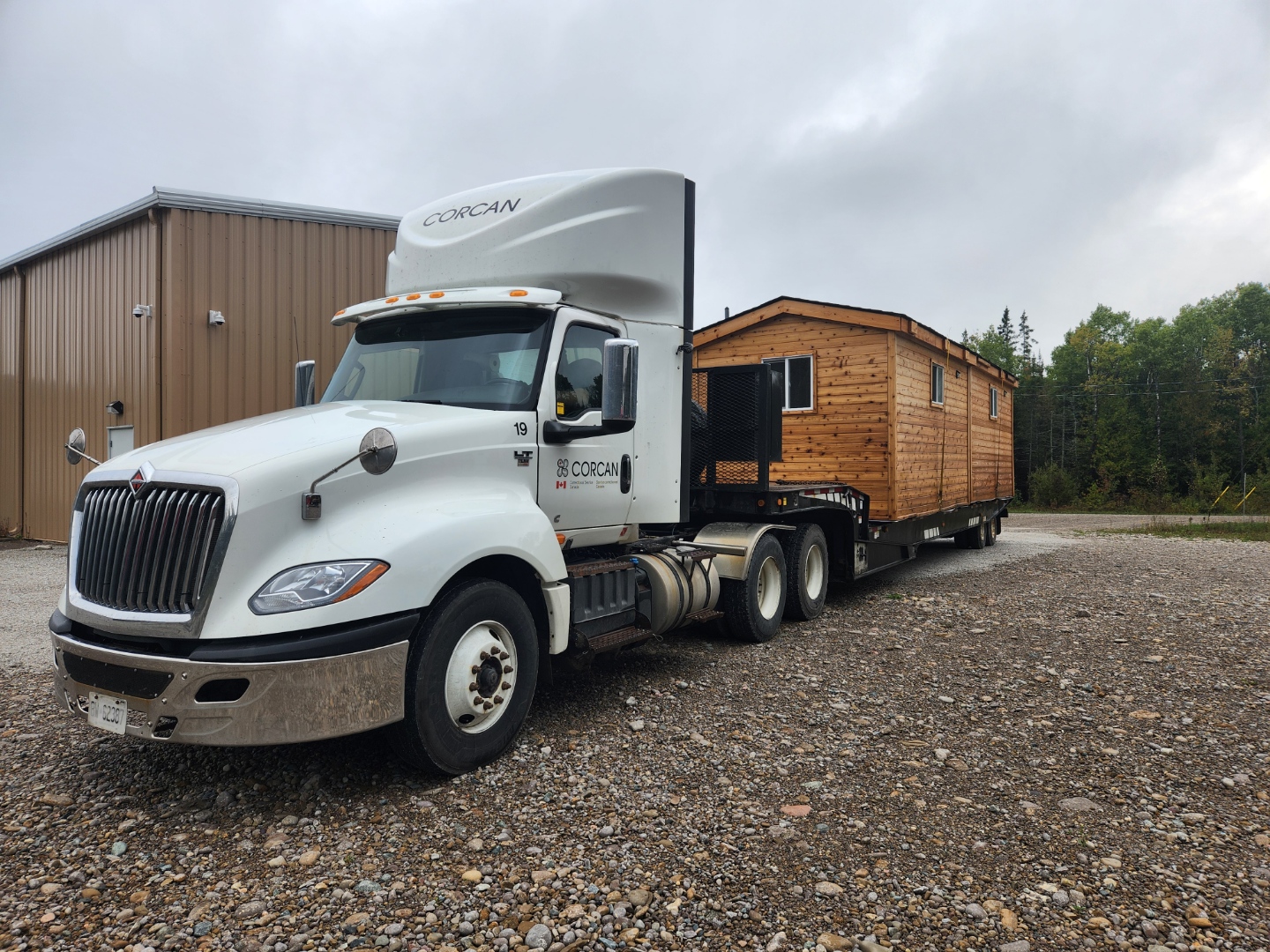Work 2 Give helps Indigenous offenders give back to their communities
June 20, 2025

In 2021, Movember Canada, a non-profit mental health organization, approached the Correctional Service of Canada (CSC) with a unique proposal: to partner on building products together for Indigenous communities.
The initiative would offer offenders, particularly Indigenous men, an opportunity to learn valuable skills while giving back to Indigenous communities in need, in the spirit of reconciliation.
The idea stemmed from a smaller partnership Movember had with CSC for a pilot project in the years prior. It was then, Sonia Prevost-Derbecker, Global Director, Indigenous Programs at Movember, heard federally sentenced Indigenous Peoples speak to how empowering and healing it felt to give back to their communities and knew this was something that could be expanded.
“This really strikes a chord for me because my dad went to jail three times,” Sonia says. “I really believe, and I think we all really believe, in people's ability to change. But we all really understand clearly that you can't change unless you feel comfortable in your own skin.”
True North Aid, an Indigenous charity organization dedicated to empowering Indigenous communities, joined the partnership to help identify community needs and source the raw materials.
From there, Work 2 Give (W2G) was born.
Robert Rittwage, the Project Lead for W2G at CSC, recalls the initial project was 40 picnic tables, 20 each for the Taykwa Tagamou Nation and the Apitipi Anicinapek Nation nations. Today, W2G currently operates shops in four institutions across the Ontario and Nunavut region: Collins Bay, Joyceville, Beaver Creek and Bath, with plans to expand to Warkworth Institution this summer.
With the help of True North Aid, Robert goes to Indigenous communities and meets with Band Council members; they identify what is needed and W2G creates it.
“I present them with a traditional offering, I give them tobacco, and after I receive approval from the council members, I work with staff and community in general to determine the needs,” he says.



Robert says those needs can range from tiny homes, to picnic tables to garden beds to dog kennels to feather boxes, hand drums and other Indigenous ceremonial tools.
W2G focuses on partnering with communities the participating offenders come from so they can not only feel they are giving back in a general sense, but are giving back to the community they may have taken from with their actions. Sonia says it can be incredibly powerful for the offenders to see the products they create directly helping their communities.
“I think the biggest thing that happens is men get to reclaim who they are, as Indigenous men, as vulnerable Indigenous men outside of the mistakes they made,” she says.
Once the products have been created, Robert gives them to community through a gifting ceremony.
Robert remembers a gifting ceremony in Wiikwemkoong Unceded Territory featuring a bunkie given to Wiikwemkoong Family Services for the purpose of bringing families together and help reconcile issues. During the ceremony, a young man experiencing homelessness said that he would live in a bunkie like that, if he could. It was at that moment W2G began creating tiny homes, which now make up the Miikaan naa aki tiny home village in Wiikwemkoong.
While each partnership has been successful, their unique nature has provided some challenges.
Robert says the support of senior CSC leadership and community leadership has made overcoming such obstacles much easier.
“[Ontario and Nunavut Regional Deputy Commissioner] Kevin [Snedden] has made it a priority to see this program through because he himself has seen the difference that it's made within the institution and the community,” Robert says.
Kevin says W2G’s ability to help offenders develop skills and rehabilitate while also making a difference to Indigenous communities is part of what makes it so special.
“W2G is such a positive program. It provides an opportunity for the men to give back to Indigenous communities, helping to make those community healthier places. While they do so they learn the skills of craftmanship, learn about themselves and are able to see their efforts culminate in the production of items that can have a positive and meaningful impact on others,” Kevin says.
“Participating in the program and building gifts for others represents a true step toward healing, both for the individual and their community.”
Robert says Indigenous participants have fully endorsed the program and want to continue being a part of the positive change, even after their Warrant Expiry Date. A true testament to the change created within the W2G program.
“How W2G is described by the participants is life changing,” he says. “One participant described his time in the program as making him feel like the walls melted away, the fences felt like they weren’t there. It made him feel as close to being on the outside as he could.”
Sonia says that W2G lets offenders reconnect with their communities. By having this connection, she says she hopes it will allow offenders to more easily reintegrate into the community successfully.
CSC has extended the original 3-year memorandum with Movember, so the program will continue until at least 2027 and hopefully beyond.
Movember is currently in the process identifying Indigenous communities in Canada where they will incorporate many of their initiatives to fill gaps and meet needs. Sonia says W2G will be a crucial part of this effort.
“All of these different services are working towards the same goal, Indigenous men’s social and emotional well-being with the idea that you hit a saturation point that tips the balance and starts to change the outcomes collectively,” she says. Robert says looking ahead, he wants to build on the work they’ve already been able to do.
“We plan to enhance First Nation partnerships in the future so that we can really make a difference in people’s lives and provide true authentic reconciliation.”
